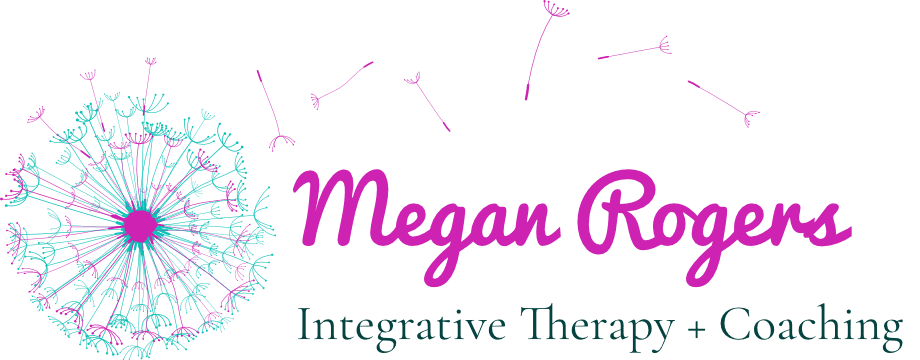Have you ever been so upset, frustrated, angry, sad, shocked, etc., that you made a decision, said something or did something, that you totally regretted?
Basically, when it came to managing emotions, you pretty much… didn’t? (I mean, no, me either, but I’m writing this just in case anyone has. Just in case.)
“Between stimulus and response, there is space. In that space is our power to choose our response. In our response lies our growth and our freedom” – Victor Frankl
I didn’t realize how reactively I lived so much of my life until I started my sobriety journey. So many things felt so automatic, decisions on auto-pilot, and it would only be afterward (once I had a little time to level out) that I wish I’d chose more wisely. Honestly, most of the time, it didn’t even feel like I made a choice. These things just… happened.
I longed to be more considerate, patient, and careful in my responses. I longed to choose things that weren’t harmful to my brain, body, self-esteem, or spirit. This was for so many things throughout the course of my adult history – to not say the super shitty, hurtful thing; to not reach for something (drink, smoke, guy) that would numb me, distract me, or (I thought) calm me down.
Nearly 100% of the time, my impulse in the moment made things worse. I just had a really difficult time choosing something better, creating the space between stimulus and response, as Frankl writes. I knew if I had that space, that pause, I could do things differently. These aren’t things that all kids are taught, at least when I was growing up (and on the surface, I was so well-behaved!). So, I set about learning how to teach myself.
Below are six tools or strategies to try before you start to lose your shit, before you freak out, to help you with managing emotions.
These come from mindfulness and somatic therapies as well as just some good ol’ coping skills. If you practice them and put them to use, they will help you feel less impulsive, more calm and in control, and overall, like less of an a-hole – I promise. I love these first 3 especially because you can do them anywhere, any time.
-
Get Grounded
This is exactly what it sounds like. Not in a loss-of-privilege kinda way, but as in, relating to the ground. First just start to notice what’s beneath you, what’s supporting you. If you’re standing, draw your attention to your feet on the ground and actually feel them there. If you’re seated in a chair, notice your butt on the seat and maybe put your feet on the floor. Feel how supported you are here. Barring an earthquake, this ground won’t be shifting; it is there for you. When you notice how good it feels to be supported and grounded like this, when you physically feel anchored, your body will automatically send signals to your brain to calm down. Often when we reach to things like food or alcohol, we are looking to something outside of ourselves to ground us, to calm us down. We can do that safely and simply, just by paying attention to our feet on the ground.
-
Orient Yourself
The next step is to bring your mind and body to the present time and place. This is like finding yourself on a map: I AM HERE, in a specific location – the here and now. Use all your senses, you can even make a game of it. Look around the room: what do you see? Tune in: what do you hear? Are there any smells? What textures or temperatures do you feel? Do you have a taste in your mouth? All of this sensory input is what actually is happening RIGHT NOW. The other things, the things in your mind, the things making you freak out, are usually not. You can orient yourself to the present and focus on that, and when you do, you will again send signals to your brain: it’s all cool, we are cool, this is what’s happening right now, we are just right here and everything in this moment is OK.
To check out an older blog on using your senses to self-soothe, click here.
-
Breathe
Breathing is intrinsically linked to our body’s stress response. When we are stressed, panicked, or feeling high-intensity emotions, our breathing tends to become shallow and quick. Sometimes we even stop breathing for a few seconds, or feel like we’re hyperventilating. Taking a pause to check our breathing, to try to shift it to slower, abdominal-based breaths, can help calm our entire system. It’s a sign that, you are breathing deeply and slowly, there’s nothing wrong here, no need to freak out. And, along with grounding and the senses, it’s the quickest way to get to the HERE and NOW. Get focused on your breath and watch what happens!
Here is a link to a how-to for abdominal breathing, and here is another breathing exercise, Yogic 3-Part Breathing for Focus and Anxiety.
Two other simple, focused breathing exercises you can try without reading another blog:
- Say a mantra on your in and out breath. Something simple like “Be here” on the inhale and “now” on the exhale. Or breathe in “calm,” and exhale “stress.” You can use whatever mantra or words you like!
- Rectangle, square, or box breathing. Breathe in for 4 counts, hold for 4, exhale for 4, hold for 4, and repeat. Imagine a box, where each side is one of these counts. You can extend your counts as you feel comfortable. To make it a rectangle, extend your inhale and exhale 2 counts, but keep the holds the same (like 6-4-6-4). I love partnering this with an orienting exercise, inhaling/counting up one side of a wall, holding across the wall, exhaling down the wall, holding back to where I began (like a rectangle!).
- Any of these are great to practice before the shit hits the fan. The more you practice, the easier it will be to access when you need it.
-
Make a Move
Ooooh, this one is so helpful when you just want to freak out! It’s such a great way to discharge energy, when you’re at a 12 on the 10-point distress scale. Moving your body creates physiological and psychological shifts, and it doesn’t take much. I mean, yeah, you can put on your favorite dance tune and get down (do it, please!), but you can also just shimmy-shake your entire body for 30 seconds, or even just walk your ass to another room or around the block. Get that blood flowing, get that oxygen to your brain. This is another great way to create that pause; shift your body, shift your mind.
-
Write it Down
Grab a pen and paper and go to town. Write (or scribble) about what’s going on, how you’re feeling and what’s coming up for you. Just the simple act of getting this stuff down on paper allows you to get it out of your system, begin to process it, and take a pause before acting on anything. It can also be a useful tool to come back to later. Sometimes seeing things on paper changes our perspective or helps us feel a bit calmer.
-
Get a Second Opinion/Phone a Friend
If you have one or two trusted people in your life (people who are supportive, insightful, and honest with you), consider trying to get in touch with them. Let them know what you’re looking for: a listening ear, advice, whatever. I’ve had so many times where I called a friend to say, “this is what’s going on, I’m trying not to freak out, should I be freaking out?, am I over-reacting?, I feel craaaaazy, I’m wearing my Bad Idea Jeans!,“ etc. A note, though, that this isn’t one you should probably use all the time, and seriously, only people who are helpful (not your girlfriend who will be like, “yeah, babe, you really should go get some drinks and get on Tinder, you deserve to blow off some steam, f*ck it, do you,” because no, that defeats the purpose, don’t listen to that friend!)
You may already have a few tried and true things that help you from impulsively reacting when you probably don’t need to. If you do and if they serve your (physical, emotional) wellbeing, that’s awesome. If you need some ideas, or are craving feeling less reactive or out-of-control, I hope you try some of mine!
Let me know how it goes managing emotions! You got this! And, if you don’t feel like you do… I can help.
Photo Credit: Luz Fuertes & Mason Wilkes via Unsplash


